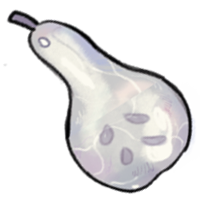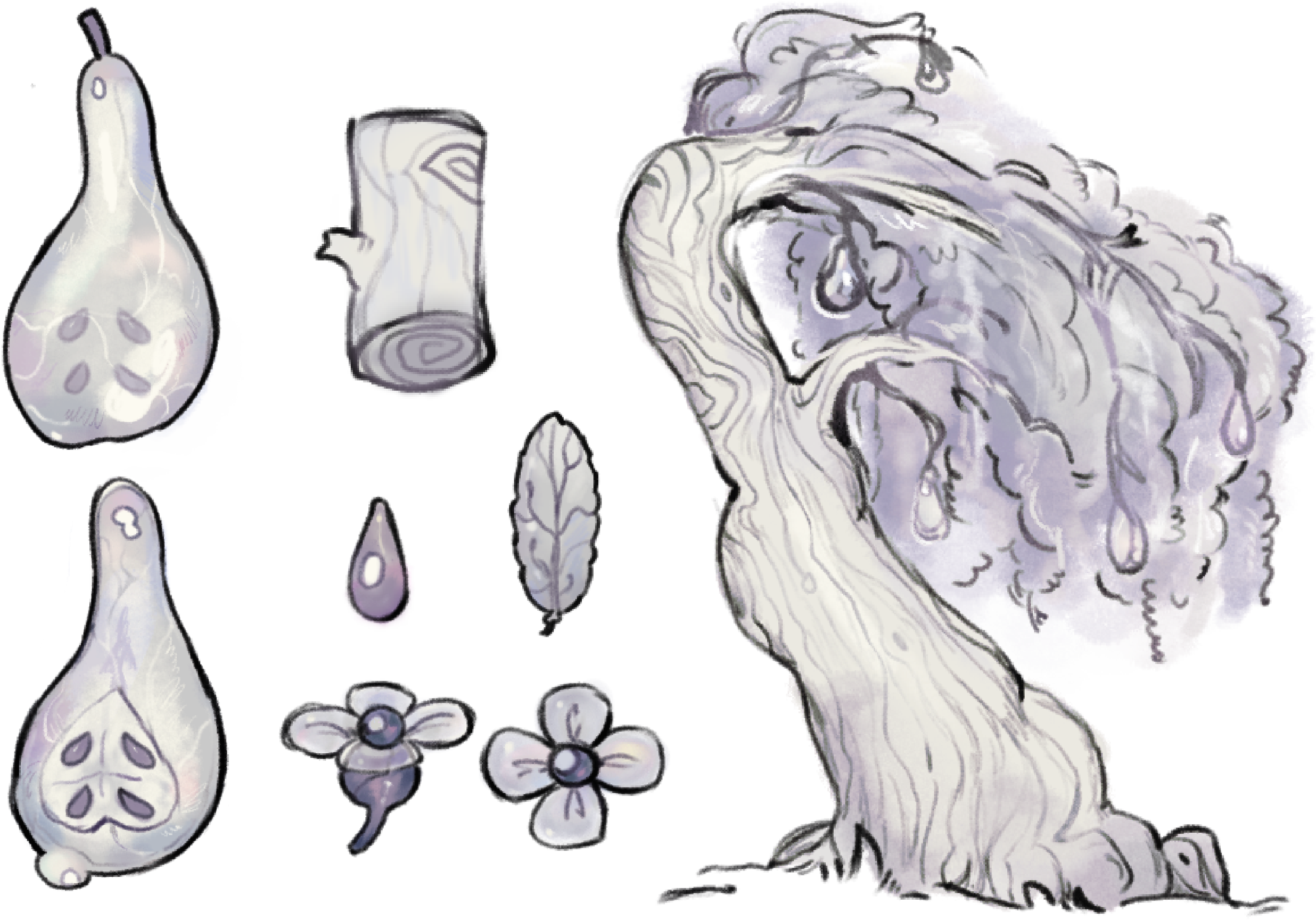 Glass Willow
Glass Willow
Cultivated

A genus of trees and shrubs in the Perspicaceae family – an albino plant by nature. The probability of a mutational green coloration appearing is extremely low, and currently Kigu hosts no more than 10 green willows (≈0,5% of the total population).
The life cycle of these plants demands not only a heightened humidity and a softer climate, but a direct proximity to clear natural water bodies (rivers, lakes, ponds), too. Glass Willow's habitat is Moss City, capable of satisfying the natural needs of trees for water.
Because of its existential conditions the wood is practically unusable for sawing and heating: the fibres contain a lot of water, which is capable of staying there for more than several years.
The bark however is used in the preparation of medicinal decoctions, while sapwood serves as a base for ointments, gels and candles.
Glass Willow leaves and flowers are white, becoming transparent under the rain and scattering light like water droplets. Not used in manufacturing since they do not possess sufficient density and are not able to last for long after separation from the crown.
Willow's Tears – the fruit of the tree. An elongated towards the top and widening towards the bottom, translucent, covered with a matte surface, extremely juicy and watery, perishable fruit, which is rich in fiber.
A ripe fruit is slightly sweet and can be easily deformed with fingers; an overripe one – extremely cloying, falls apart and melts from imprecise touch.
The quality of the fruit directly depends on the clearness of water bodies that surround the tree from which the fruits nurture. Fruits from polluted regions possess a darker tone, indicating poor growing conditions, while good conditions are defined by translucency and a "glassy" shimmer.
Willow's Tears make up a large portion of the Moss City's exports. They sell well because of high variety of uses in general aspects of life: sauces, desserts, flavorings, cosmetic care products, and, last but not least, as a pleasant treat.
Род деревьев и кусатарников семейства Перспиковых, по природе своей — альбиносное растение. Вероятность появления дерева с мутантной зеленой окраской крайне мала, и на данный момент на планете Кигу не более 10 зеленых ив (≈0,5% от общей популяции). Жизненный цикл этих растений требует не только повышенной влажности и мягкого климата, но и непосредственной близости чистых природных водоемов (рек, озер, прудов). Ареал обитания стеклянной ивы — Мшистый город, способный удовлетворить естественные потребности деревьев в воде.
Из-за условий существования древесина практически непригодна для вырубки и топки: волокна содержат в себе много влаги, которая способна сохраняться более нескольких лет. Кору же используют при приготовлении лечебных отваров, а заболонь становится основой мазей, гелей и свечей.
Листья и цветы водной ивы белого окраса, под дождем становятся прозрачными и рассеивают свет, как водные капли. В промышленности не используются, так как не обладают достаточной плотностью и не способны долгое время существовать после отделения от кроны.
Плод дерева — слезы ивы. Вытянутый к верхушке и расширяющийся книзу, полупрозрачный, покрытый матовой пленкой, крайне сочный и водянистый быстропортящийся фрукт, богатый клетчаткой. Спелый плод слегка сладковат и легко продавливается пальцами; незрелый будет вязать во рту и иметь упругую структуру, а перестойный - крайне приторный, распадается и растекается от неаккуратного касания.
Слезы ивы составляют большую долю экспорта Мшистого города. Плод пользуется популярностью у кулинаров и гурманов высокой кухни, нередко экстракт фрукта применяется в производстве кремов и эссенций в косметической промышленности. Среди народа широко распространен, как приятное лакомство и дополнение ко многим блюдам.
